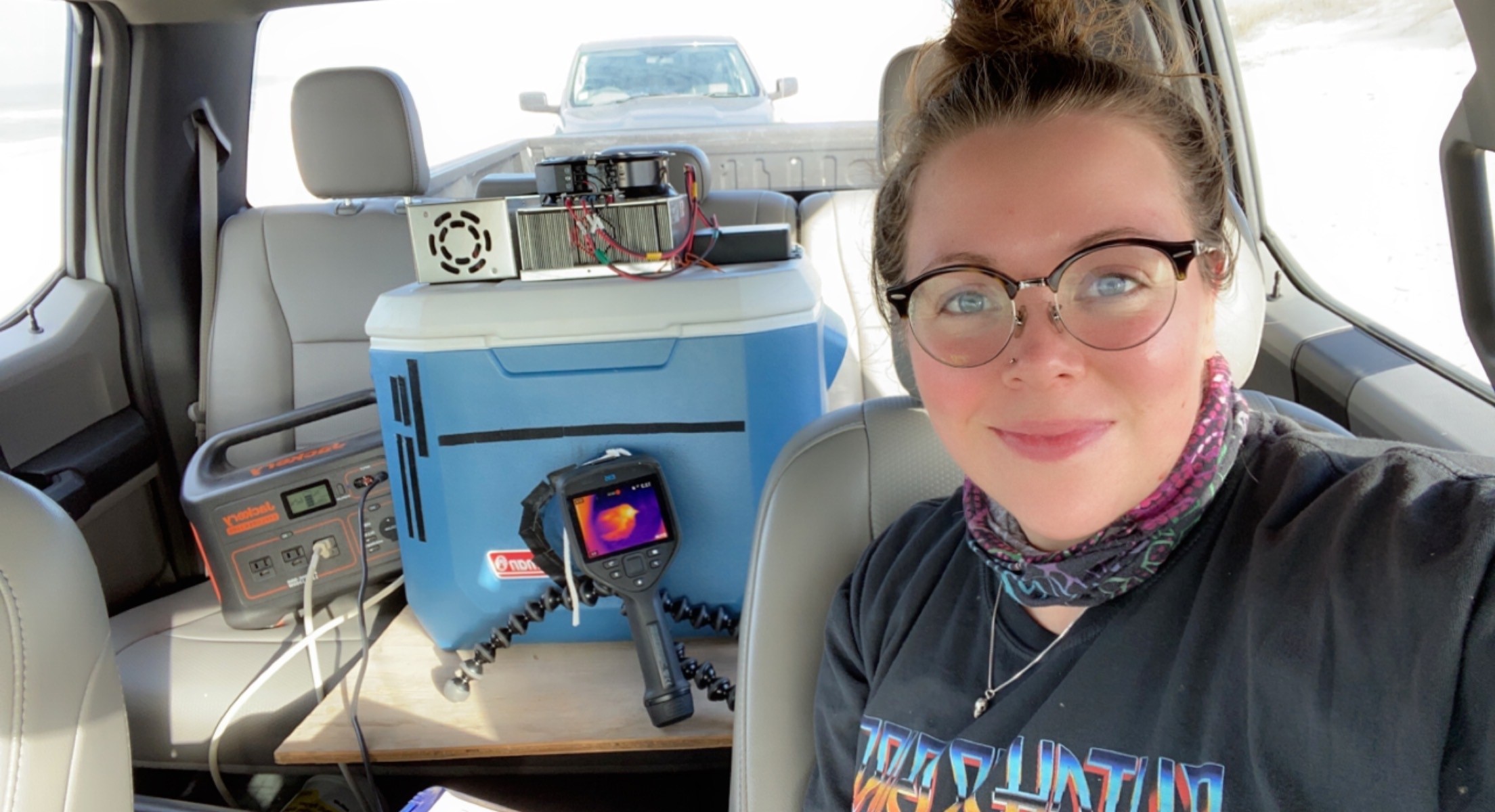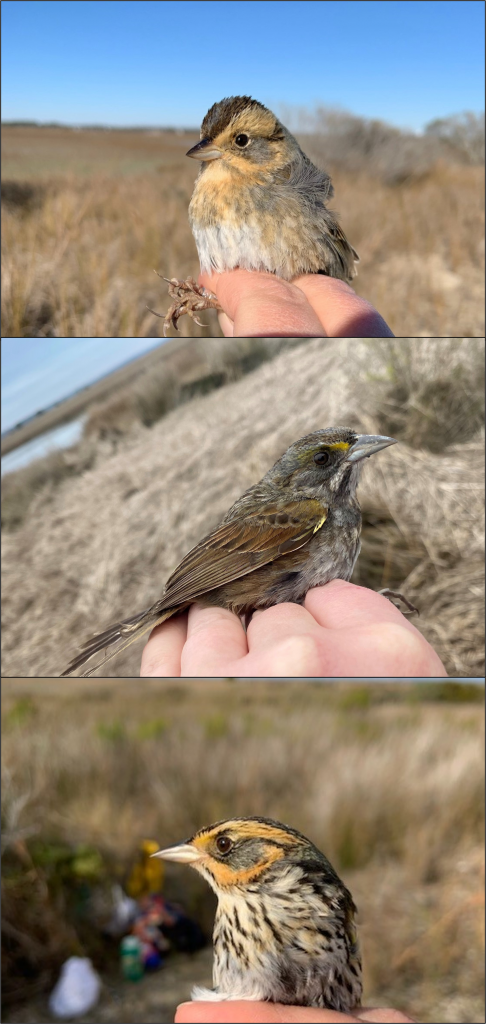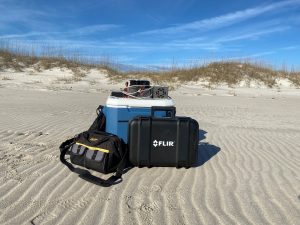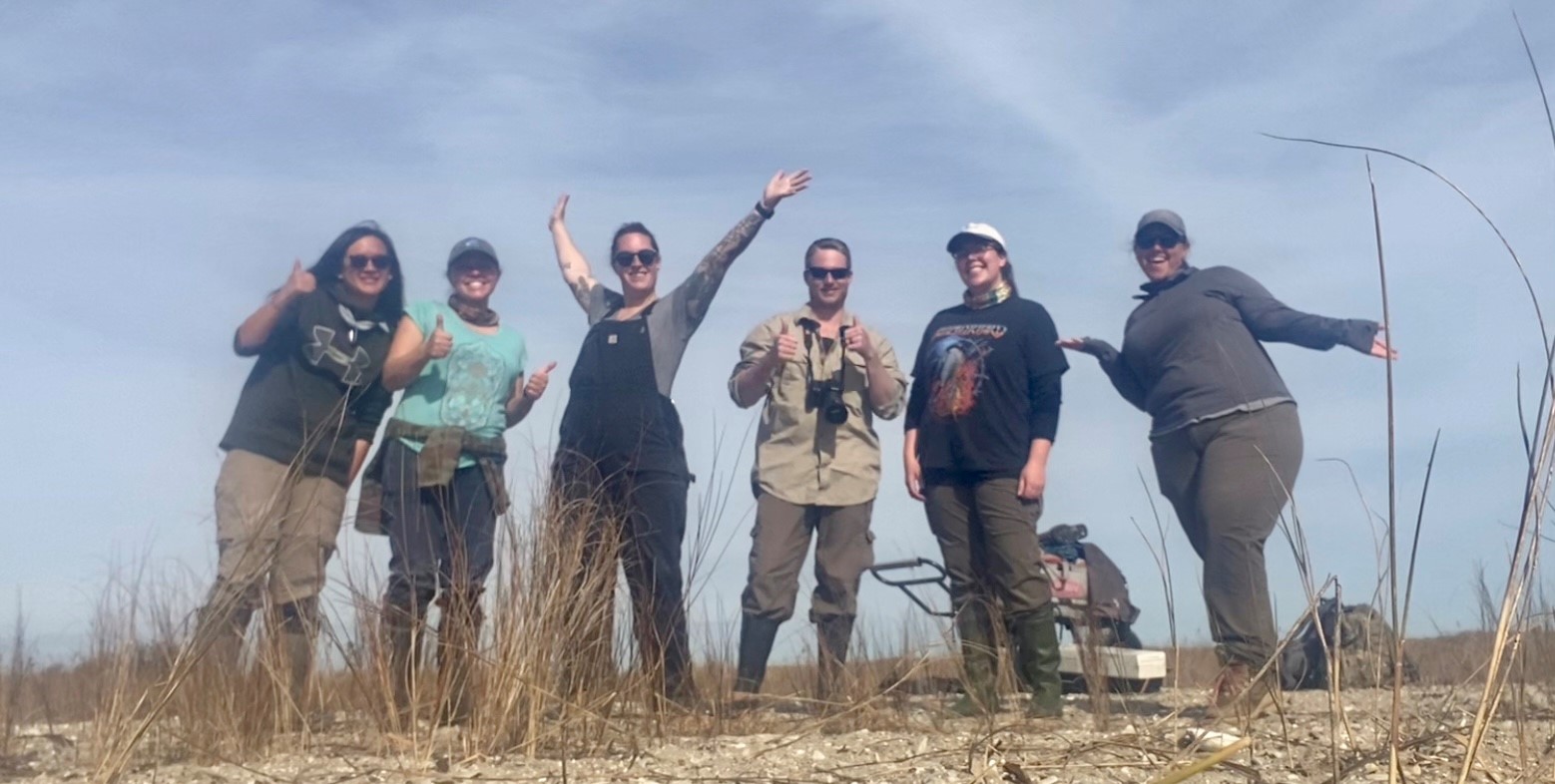
25 May 2022
Beaks are an important asset for birds that live in environments with limited freshwater. This is because their bills are thought to offer a route for non-evaporative heat loss, helping the birds to regulate their body temperatures without losing water. Mackenzie Roeder, a PhD student from the University of Maine, used a Travelling Fellowship from Journal of Experimental Biology to support her quantification of this effect in the field.

The idea that the bill helps birds to lose heat while conserving water is partly rooted in the observation that birds with larger bills are found in warmer climates, or in environments with higher salinity. Mackenzie’s doctoral research aims to test this in the field, where she focuses on three species of tidal marsh sparrows. The different species (Ammospiza nelsoni, Ammospiza maritima and Ammospiza caudacuta) colonised the salt marsh at different times, which makes them perfect for Mackenzie’s work.
Mackenzie is using thermal imaging to determine the importance of the bills for heat dissipation, since this technique allows her to measure the percentage of heat loss that occurs through the bill. To do this, she employs a temperature-controlled chamber to house the sparrows as she catches them in the field, then monitors them using a thermal imaging camera. With these measurements, she can then test whether the percentage of heat lost through the bill correlates with bill size, and with the order that the birds colonised the marsh.
Mackenzie had already gathered data from the birds’ breeding grounds, from Maine through to New Jersey. However, she explained that it was important to account for the influence of environmental factors in each species’ patch, as these could also impact how much heat is lost through the bill: “[…] there is the potential that any differences detected between species is the product of local climatic acclimation”. To explore this possibility, Mackenzie needed to take measurements from birds of different species that are found within overlapping patches. However, in the breeding grounds, there is no place where all three species co-occur. Mackenzie therefore looked south to the wintering grounds.

Using a Travelling Fellowship from Journal of Experimental Biology, Mackenzie travelled to work with Dr Raymond Danner’s group at the University of North Carolina, Wilmington. The birds spend their winter months in North Carolina, and it is here that the three species share some overlapping ranges. Accompanied by fellow PhD student Marae Lindquist West and her team, Mackenzie was able to repeat her experiments from the breeding season. “By joining Dr Danner and Marae I successfully conducted over 20 thermography experiments”, Mackenzie said, “including multiple replicates of all three species!”
Mackenzie’s preliminary results support her theory that the percentage heat loss from the bill correlates with time since colonisation. The visit also provided her with some valuable samples, as she was able to collect faecal matter from the birds which will allow her to compare their wintering and breeding ground diets. “I have no doubt that at least two manuscripts will result from this trip, if not three, and many future projects to come!”










You must be logged in to post a comment.